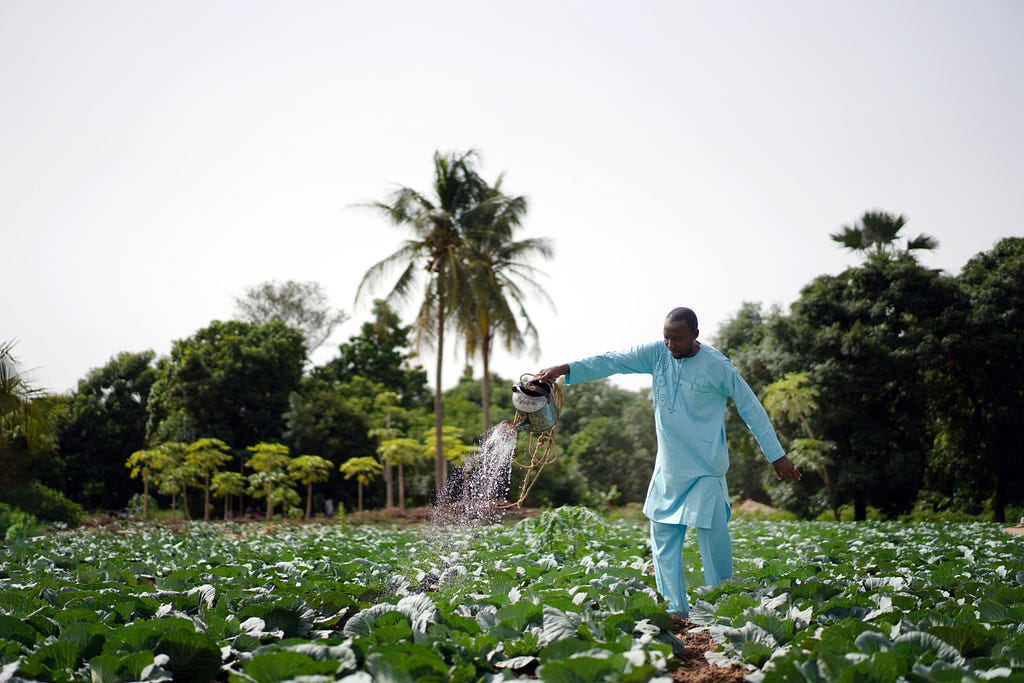Using Insurance and Climate-Smart Technologies to Help Farmers Cope with Weather-based Risk
The Digital Agricultural Innovations and Services Initiative (DAISI) is jointly managed by CEGA and J-PAL, and is generously supported by the Bill & Melinda Gates Foundation. This post was authored by Sarah Coughlin (J-PAL) and was originally posted on the J-PAL website.

Worsening droughts, more frequent and severe floods, erratic temperatures, and unpredictable seasons: these are just some of the disastrous consequences of climate change that wreak havoc on agriculture. Small-scale farmers in low- and middle-income countries (LMICs) typically have limited social safety nets to protect them against the growing threat of weather-based shocks. An urgent policy priority, both to increase farmers’ own productivity and profits and to contribute to stabilizing food security throughout these regions, is to provide accessible forms of risk protection. J-PAL’s updated Policy Insight reviews 23 randomized evaluations on common interventions intended to boost farmers’ risk protection and help them make optimal farming decisions.
Agricultural decisions in the face of weather-based risk
Farmers are faced with many decisions at the beginning of the agricultural season, including which crops or seed varieties to plant, how much to spend on inputs like fertilizer, and how much land to plant. Higher upfront investments in productive agricultural technologies like fertilizer, seeds, and pesticide can increase yields and profits at the end of the season. However, choosing to make these investments may seem unwise if there’s a chance they will not pay off due to an unexpected extreme weather episode. This uncertainty leads to a cycle of underinvestment and low productivity that can trap small-scale farmers in poverty.
One common tool to protect against risk is agricultural insurance, which typically pays farmers back for their recorded crop losses due to an adverse weather event. Weather index insurance is an innovation developed to reach small-scale farmers in LMICs by basing payouts on an easily observable variable, like rainfall at a local weather station, which is compared against historical norms and used as a sliding-scale index of farmers’ anticipated crop loss.
Insurance can protect farmers against shocks — but most are not willing to buy it
Overall, studies showed that farmers purchase index insurance at such low rates that insurance is often not profitable for lenders, inhibiting the growth of self-sustaining markets. However, overcoming learning, trust, or credit constraints can help boost take-up in some cases.
When insured farmers receive a payout or see their peers benefit from insurance, they are more willing to buy it the following season — but these effects dissipate if farmers pay for insurance and do not later receive a payout. Social learning and financial literacy trainings can boost insurance take-up, but their effects similarly do not always persist over time. Tailoring insurance to farmers’ unique seasonal incomes is also key, since farmers have limited cash on hand at the beginning of the season when they have to pay for insurance. While pairing insurance and credit products has not been shown to increase take-up in most cases, offering farmers flexibility to repay insurance after harvest time is a promising alternative, particularly for the least wealthy farmers.
When insurance is both appropriately tailored to farmers’ local contexts and is heavily subsidized, farmers do purchase it. In these cases, insurance is effective in helping farmers cope after a shock, and this protection also incentivizes farmers to shift their production decisions to higher risk and higher reward choices, like weather-sensitive cash crops. With this added benefit of boosting investments in both good and bad weather years, when insurance is designed in accordance with farmers’ local contexts, it may be an effective form of social protection targeted at small-scale farmers.
Insurance is just one tool to protect against risk: The role of risk-mitigating technologies
New agricultural technologies like drought- and flood-tolerant seeds and climate-smart practices such as rainwater harvesting can help make production itself more resilient to risk, rather than allowing damages to occur and compensating for them with insurance payouts. Pairing insurance and climate-smart technologies may also provide additional benefits than offering them on their own. While improved seed varieties help lower crop losses during moderate weather events, farmers are more willing to make risky production decisions with the addition of insurance.
Looking forward: Crowding in research on innovative technologies
While risk-mitigating technologies are promising complements to insurance to provide comprehensive protection that both lowers farmers’ risk exposure and helps them bounce back after a shock, more research is needed on how to bundle these strategies effectively. The Digital Agricultural Innovations and Services Initiative (DAISI), jointly managed by J-PAL and the Center for Effective Global Action and generously supported by the Bill and Melinda Gates Foundation, was launched in 2021 to shed light on digitally-enabled, bundled agricultural services for small-scale farmers. A core component of DAISI’s research agenda is to disentangle which elements of a bundled service are key to its success — and how to design bundled services to effectively alleviate small-scale farmers’ productivity constraints.
Small-scale farmers are at the forefront of global food security, and their livelihoods are also uniquely vulnerable to the effects of climate change as the intensity of weather shocks accelerates globally. As world leaders emerge from COP28, policymakers should continue to prioritize identifying and scaling evidence-based solutions tailored to farmers’ local contexts to boost global food security and protect farmers’ livelihoods.
Using Insurance and Climate-Smart Technologies to Help Farmers Cope with Weather-based Risk was originally published in CEGA on Medium, where people are continuing the conversation by highlighting and responding to this story.

